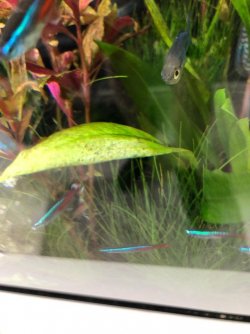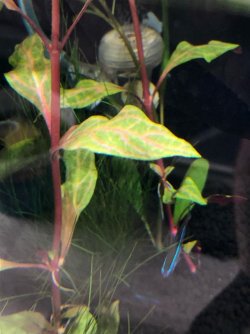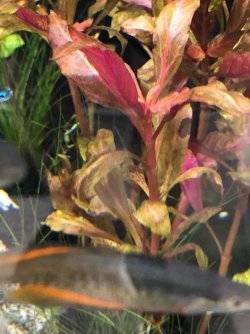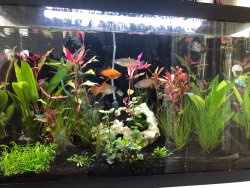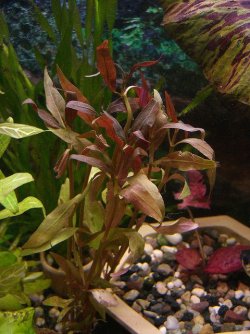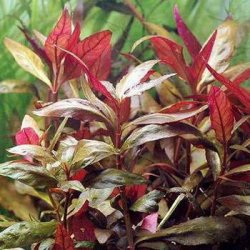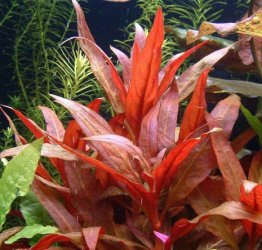There are different varieties, which will be explained in the passage below from my online profile of this species. I will also include photos; the first photo illustrates Alternanthera reineckii, the second is A. r. "lilacina," and the third is A. r. "rosaefolia." Beyond this, being a red leaf plant the lighting must be strong in the red wavelength; red is the primary light that drives photosynthesis, and in red leaf plants the red light is reflected which is why it appears red, so red light is even more crucial.
Discussion
The Amaranthaceae family of flowering plants contains more than 2400 species, many of which are terrestrial herbs and shrubs. The 80 species in the genus Alternanthera include several that are aquatic. A. sessilis is rarely seen commercially and is better suited in a plaudarium. Kasselmann (2003) recognizes four cultivar forms in addition to the natural species, and these will be discussed below. The genus was erected by the Swedish botanist Peter Forsskal (1732-1763), a student of Carl Linnaeus, the father of modern taxonomy; the name Alternanthera derives from the Latin alternus [alternating] and anthera [anther], referring to the alternating fertile and infertile stamen of the flower.
A. reineckii is one of the nicest red-coloured plants for the aquarium, but is often not easy to cultivate. It requires bright light and good nutrients, and often lasts longer and grows better under high light with CO2 diffusion. As noted under water parameters, slightly acidic water is preferred, though the plants will usually grow in slightly basic, especially the "rosaefolia" cultivar. The stems should be planted individually, approximately 1.5 inches apart, to allow more light to reach the lower leaves.
The stems do not grow much taller than 20cm/8in, making this a good plant for the middle area especially in larger aquaria. The upper surface of the leaves vary in colouration (depending upon the cultivar) from green/olive green to red, while the underside is pink to purple. Propagation is simple--pinch off the terminal bud and plant it in the substrate; this will also create a bushier main plant as side-shoots will grow. Flowers only appear when the plant is grown emersed.
The "Red" and "Green" varieties of A. reineckii are not easy to grow; the leaves frequently rot even under optimum conditions. These plants require bright light, good nutrients, and CO2 is recommended. These varieties are not often seen.
The Purple cultivar "lilacina" is named from the purple underside of the submersed leaves. Although this cultivar will grow under less light, growth will be better with more light. This plant requires acidic water to prevent lime deposits from forming on the leaves and reducing nutrient assimilation.
The most commonly-seen cultivar in aquaria is "rosaefolia," or Pink. This is the largest and most decorative form, and the easiest to cultivate. The plant grows well in soft or hard water, but growth will improve in soft slightly acidic water.
References:
Kasselmann, Christel (2003), Aquarium Plants, English edition.


